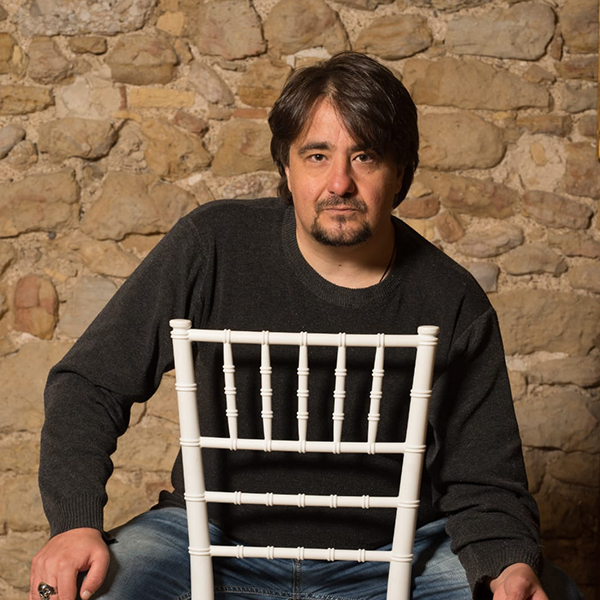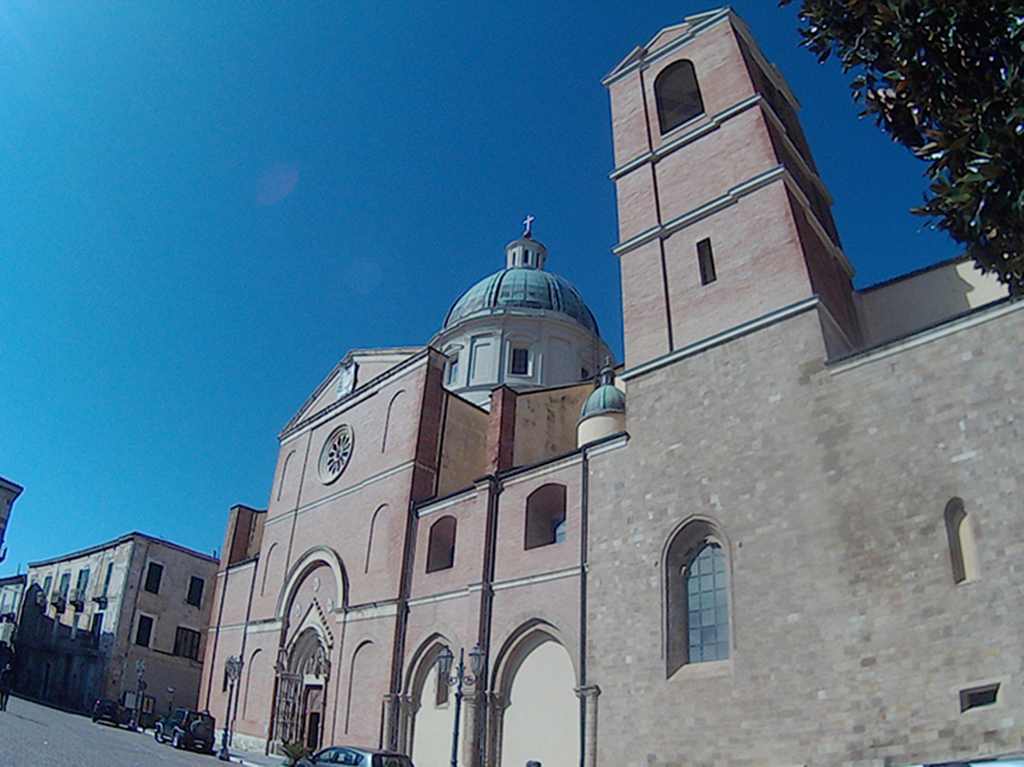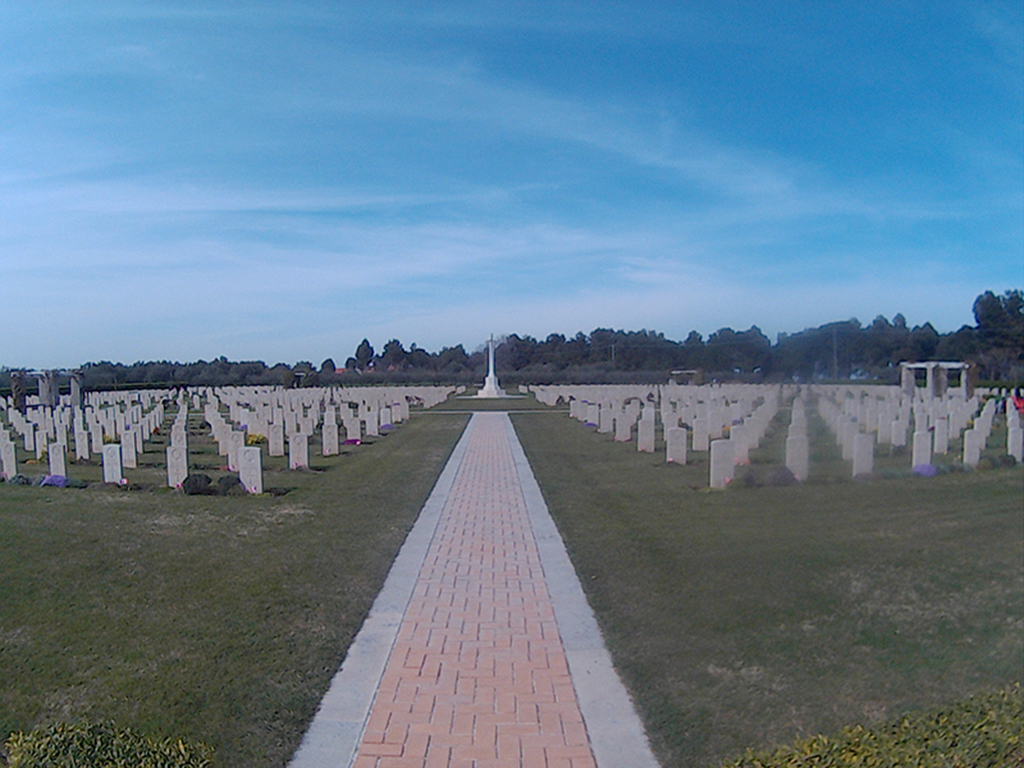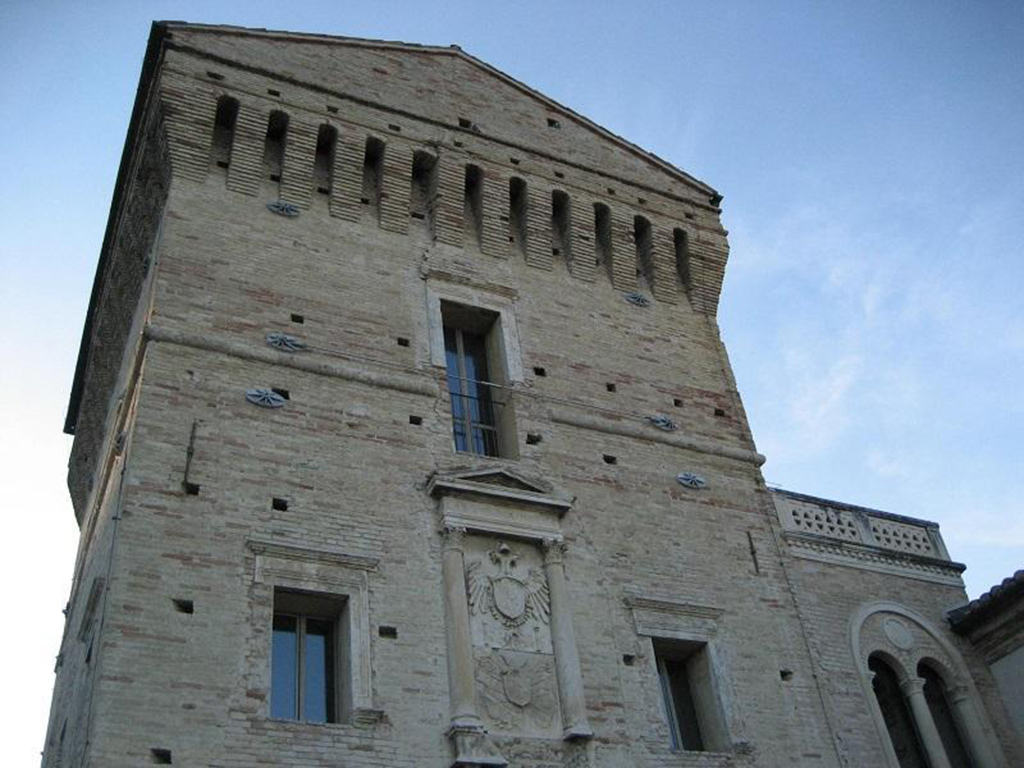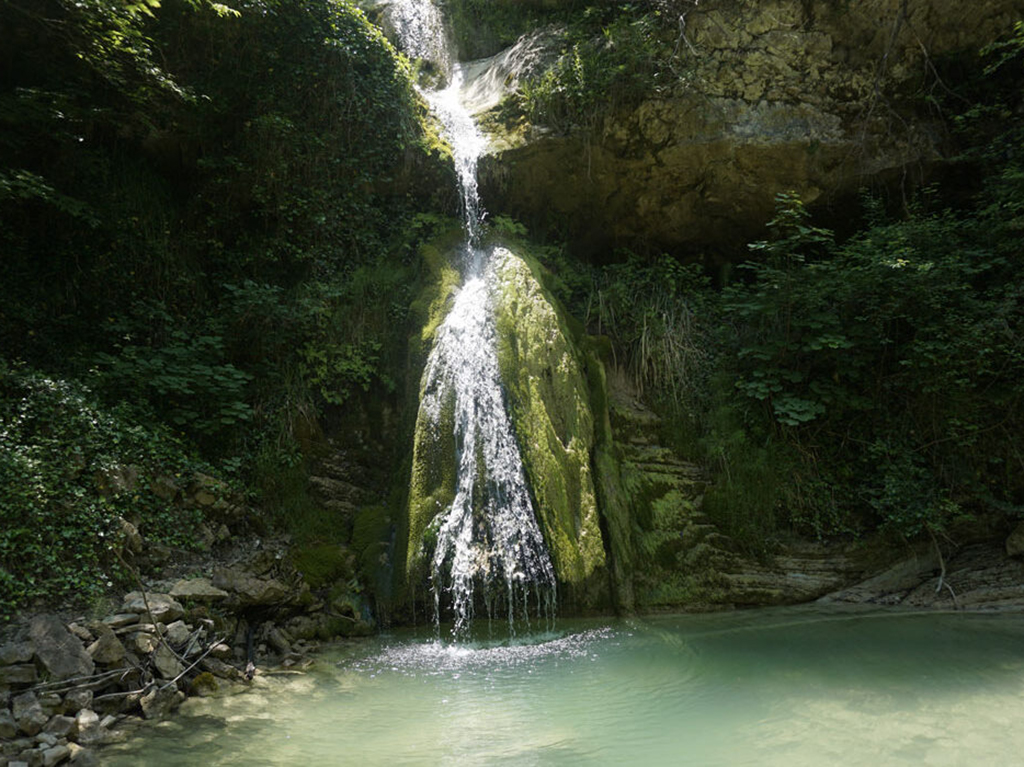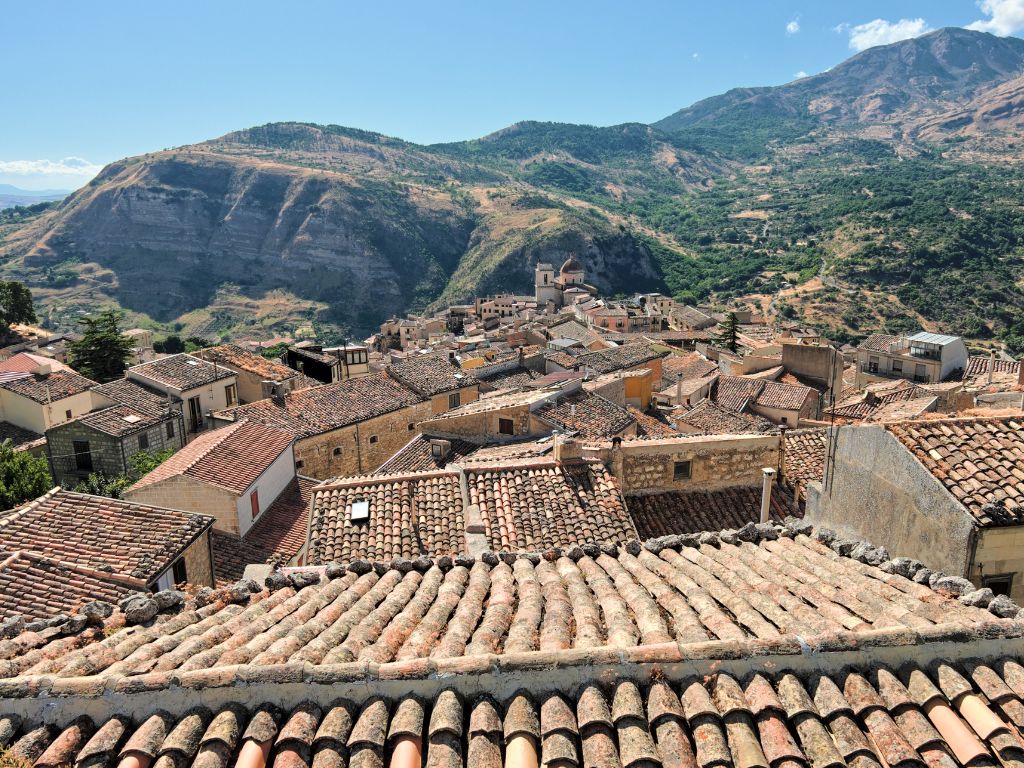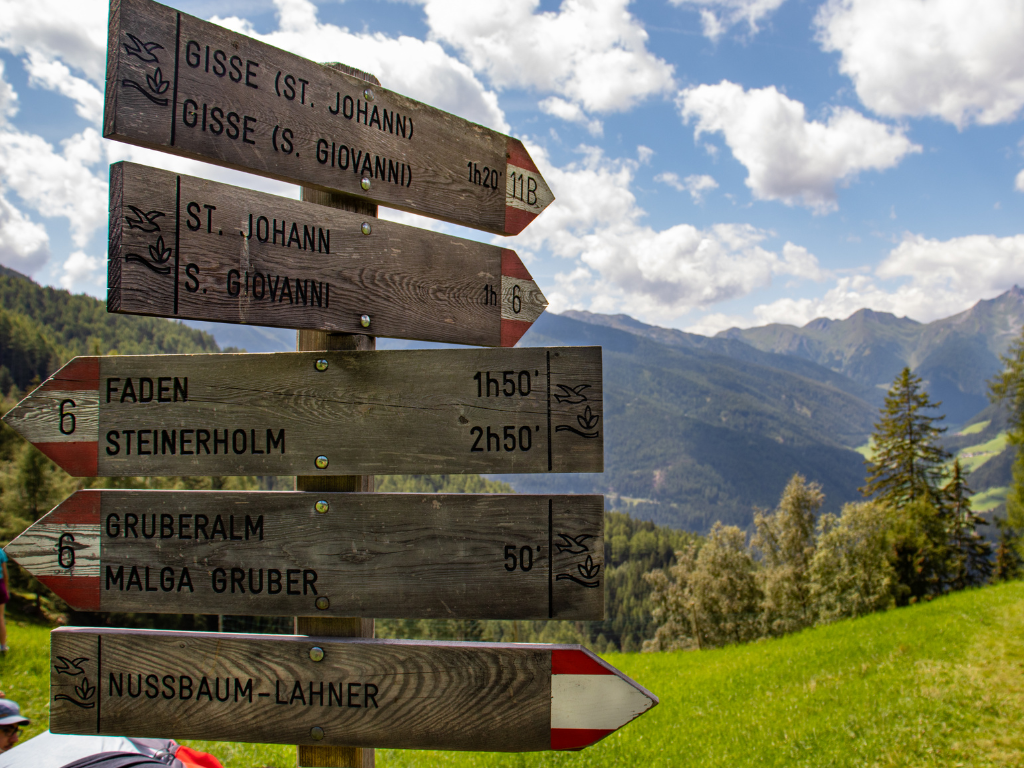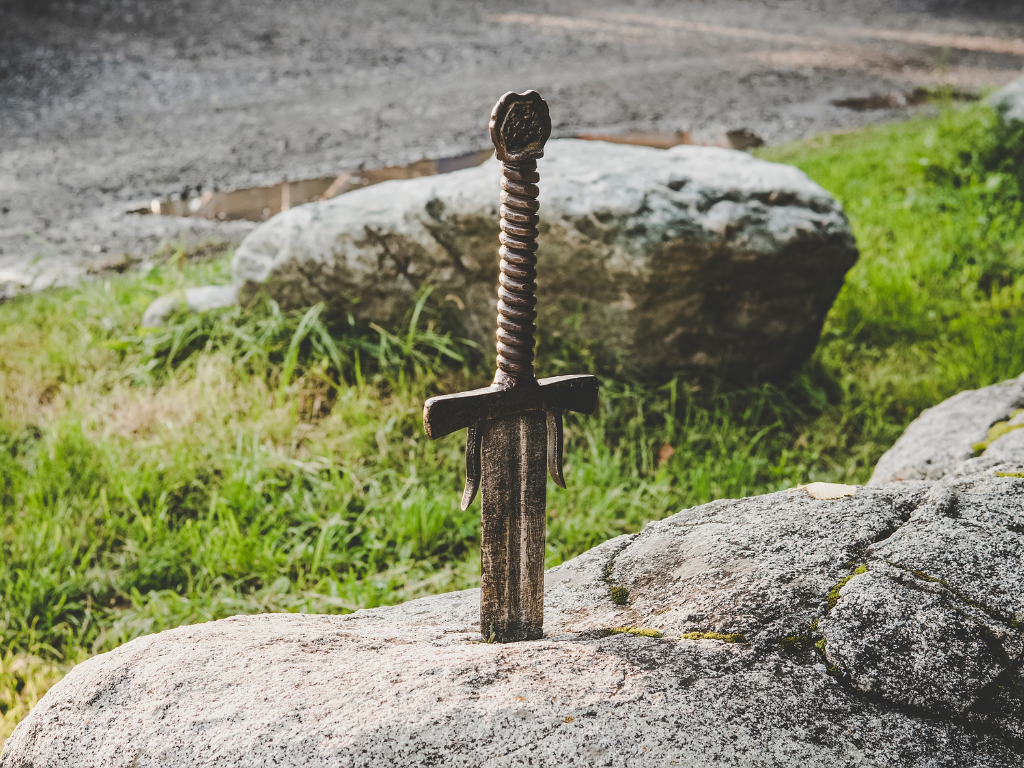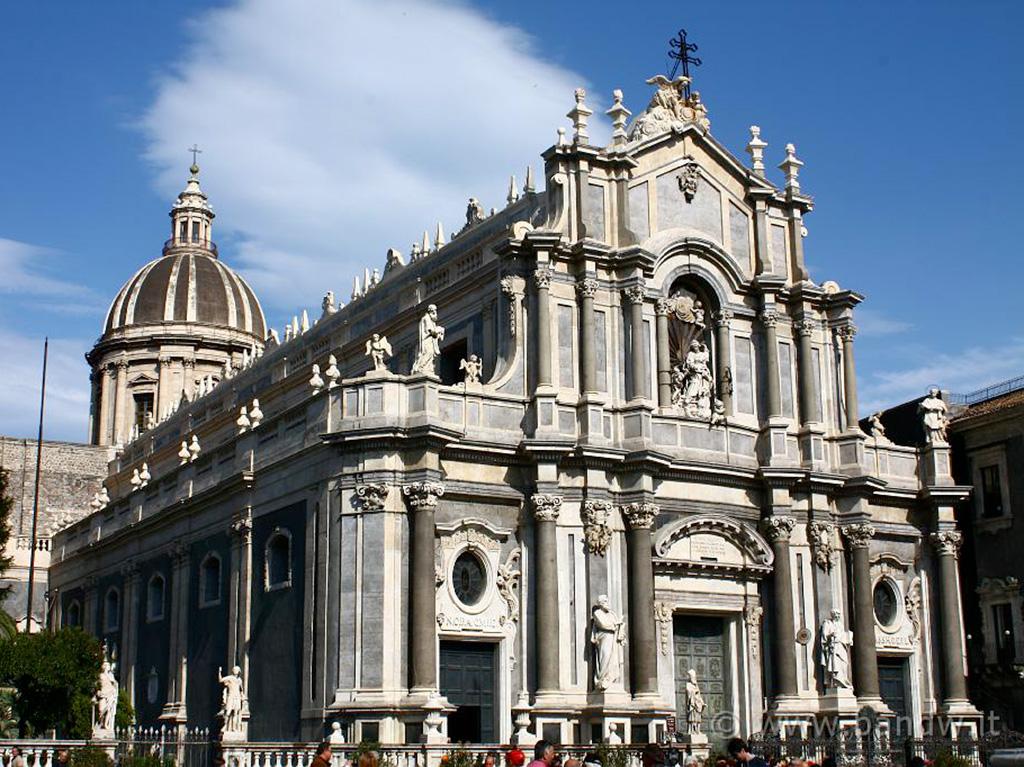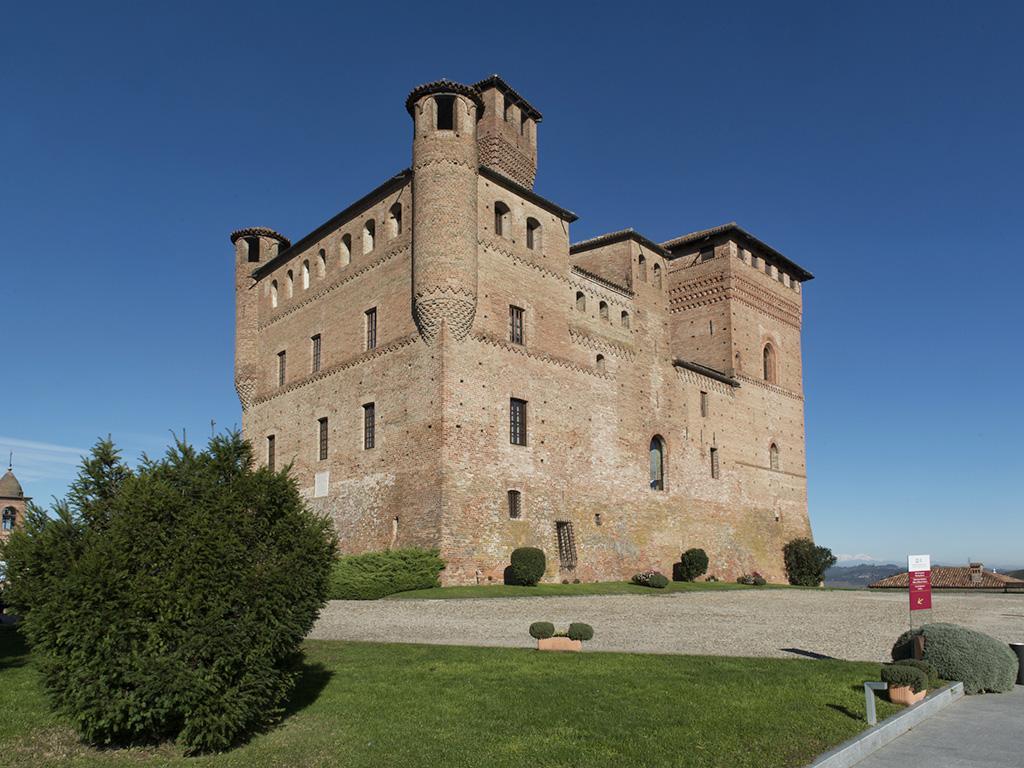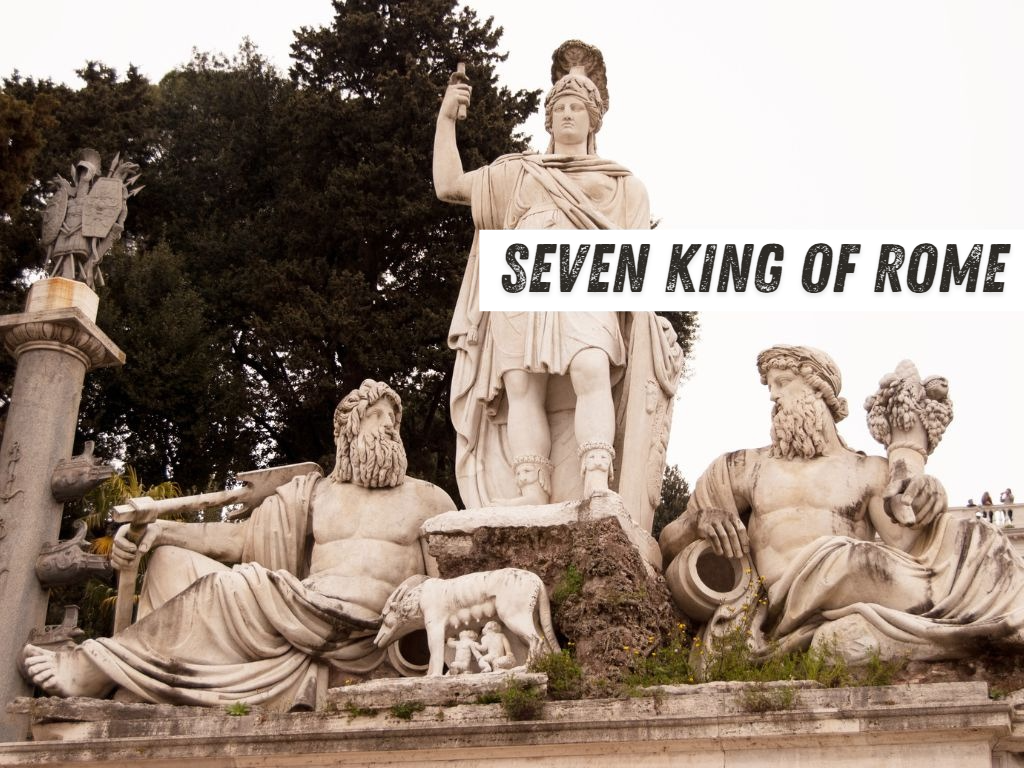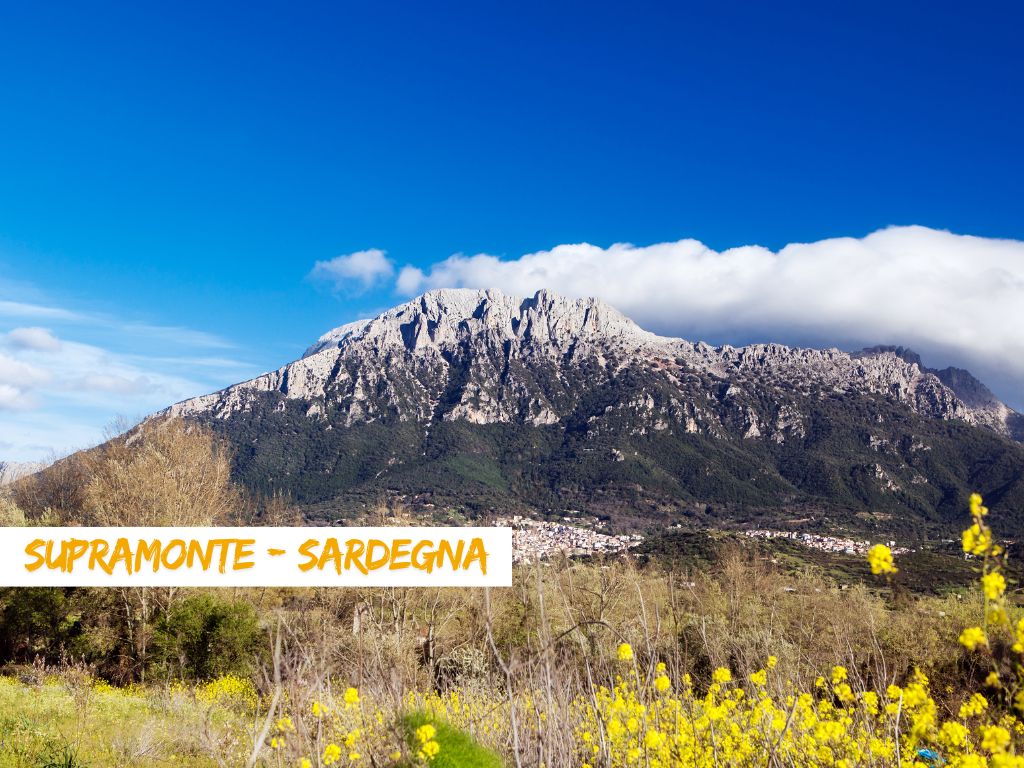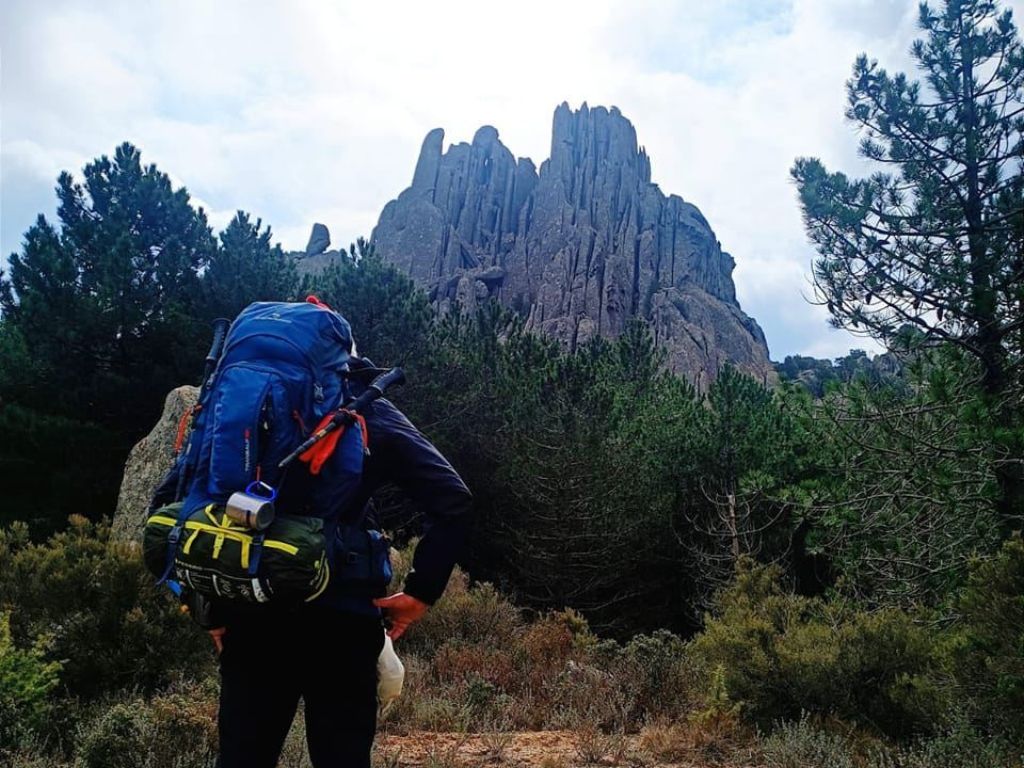The central region of Italy is famous for its rich history, breathtaking landscapes, and captivating places to explore. Among the numerous hidden gems of this region lies Roccascalegna, a picturesque medieval fortress that enchants visitors with its grandeur and timeless charm. Located in the province of Chieti, in the Abruzzo region, Roccascalegna is a place that seamlessly blends its imposing historical heritage with the surrounding natural beauty, creating a unique experience for those who visit.
Roccascalegna: An Enchanting Ancient Fortress Amidst History and Nature
History and Architecture
Roccascalegna Castle is a majestic fortress located in the Abruzzo region, in the province of Chieti, Italy. It is one of the most iconic and enchanting places in the central region of the country, nestled in a rugged rocky wall that overlooks the surrounding valley.
The history of the castle dates back to at least the 10th century, although some archaeological traces suggest that there might have been a Roman settlement on the site. Over the centuries, the castle has undergone numerous architectural changes and passed through various noble families.
The most distinctive feature of Roccascalegna Castle is its geographical location. It stands on a rocky spur with a vertical wall of over 30 meters, offering a naturally advantageous defensive position. The main building of the castle, known as the "Torre Maestra" (Master Tower), dominates the entire structure with its grandeur. It is a square tower about 30 meters high, with thick walls that testify to its defensive purpose.
Roccascalegna Castle has undergone meticulous restoration work that has preserved its original appearance. The castle's interiors feature numerous medieval elements, such as frescoes, ancient fireplaces, stone staircases, and imposing doors. One of the most fascinating parts of the castle is the medieval chapel dedicated to St. Peter, which testifies to the presence of a religious community within its walls.
In addition to its interior structures, the castle also offers breathtaking panoramic views of the surrounding valley, with its hills, forests, and nearby villages. It is a place that combines imposing historical heritage with natural beauty, creating an unforgettable experience for visitors.
Today, Roccascalegna Castle is open to the public and attracts visitors from around the world. History enthusiasts, architecture lovers, and those captivated by medieval charm will be thrilled to explore the ancient halls, watchtowers, and collections of weapons and armor inside. Additionally, the surrounding trails offer opportunities for pleasant walks and nature hikes.
In conclusion, Roccascalegna Castle is a unique attraction that blends history, architecture, and stunning landscapes, offering visitors an unforgettable experience in the heart of Abruzzo.
Travel Diary
Our journey to discover Abruzzo led us to Roccascalegna, a town of 1,145 inhabitants famous for its splendid castle overlooking the valley below. Upon arrival in the village, we were warmly welcomed by Mayor Domenico Giangiordano, a man who believes in his town and who, through targeted and ingenious marketing actions, has managed to publicize it to the point of making it nationally renowned. In his office, he explained to us that Roccascalegna has undergone a complete transformation in four years thanks to free sponsorships implemented with genuine and ingenious strategies. The castle appeared in the famous film by Matteo Garrone, "Il cunto de li cunti" (you can see the image of the castle on the right side of the poster), was featured in an episode of "Meraviglie" hosted by Alberto Angela with the narrating voice of Francesco Pannofino, and was the first Italian municipality to use videomapping, projecting directly onto natural rock.
After enjoying a good coffee, Francesco and I split up. Guided by a young but experienced local guide (Samule Cianci), I delved into the beauty of Roccascalegna Castle. We immediately delved into legends (which I relish), and I learned that the owner at the time, Baron Corvo de Corvis, owed his name to the fact that the local people were obliged to worship a black crow at the entrance of his estate. If the crow cawed, the people had to pay a tax. After reintroducing the "Ius Primae Noctis" (the medieval custom of allowing the local noble to spend the first night with a newlywed bride), a jealous peasant disguised himself as a woman and entered the castle to kill the baron. The legend tells that the baron's bloodied hand was imprinted on the tower, which unfortunately was destroyed.
As we continued our ascent, the young guide explained that the Church of St. Peter was under restoration and that the bells came from Agnone and had a peculiarity: there were traces of gold and silver as a sign of devotion to the saint. The foundations of the castle were much lower because crypts containing bones were discovered. After going live to showcase the delightful panorama visible from the castle, we entered the structures. Here, I marveled at a Byzantine flamethrower that had the peculiarity of igniting pitch but the resulting Greek fire could not be extinguished with water; ammonia, which was present only in... urine, was the only method to put it out. I saw the bathroom from which acids could be poured during invasions (let's not forget that the castle had a purely defensive function and was built to fulfill this purpose), a cistern that could hold 20,000 liters of water, and rainwater collected in the well was made drinkable by using eels. There was a kitchen with a room ten meters deep, which, having a temperature below zero, was used for meat preservation.
Moving higher up, Samuele explained to me a particular feature of the structure: the entire castle had stairs built in a way that knights could naturally attack with their right hand, giving the enemy a disadvantage, and also because the left hand was considered the Devil's hand.
Outside, I admired the Church of San Rosario, dating back to 1577, with an altar designed so that the parish priest could preach in front of it, as not all citizens could understand the Word of God.
In the end, after walking along a small and delightful botanical path, we climbed to the top to admire the entire valley. The amazement of being able to embrace so much beauty with a single glance gave me more than one dizzy spell. Here, young Samuele explained the various theories about the name of the town: Roccascalegna. The most credible hypotheses were three: the first attributed noble deeds to a Lombard named Ascani, and the title of "Rocca di Ascani" for the village, from which "Roccascalegna" derived; the second because "Scarenna" means steep in dialect, hence "Rocca scoscesa" (steep castle); the last was related to the fact that a wooden ladder was needed to climb to the top of the tower, thus "Rocca scala legno" became "Roccascalegna".
After this immersion in the local culture, which I'm fond of, we descended (a peculiarity: the ascent from below seems long and insurmountable, but it's actually an optical illusion) and, reuniting with Francesco, we prepared to discover new wonders. But there was one more surprise.
The mayor took us to a historic local bakery, the "Panificio del Barone" (Baron's Bakery), where the kind Anna Maria offered us a product she created: "pane porchettato," bread leavened with porchetta inside. An explosion of flavor and culinary genius.
Roccascalegna left us with much: food, culture, tradition, and legends. And, as I got into the car, I heard the strange croaking of a crow in the distance: a sign that Baron De Corvis still hovers to welcome visitors to his majestic and splendid castle.
The Legend of the Crows
The legend of the crows of Roccascalegna is an ancient story passed down through generations in the region. The legend tells of a forbidden love that blossomed between a princess and a young soldier. The princess was the daughter of the lord of Roccascalegna Castle, while the soldier was a humble warrior of peasant origin.
When the lord of the castle learned of the secret love between his daughter and the soldier, he became enraged and decided to separate the two lovers. The lord of the castle imprisoned the young soldier in the castle's dungeons, thus depriving the princess of her love.
Desperate over the imprisonment of her beloved, the princess begged her father to free him, but her pleas fell on deaf ears. Determined to be reunited with the soldier, the princess defied her father and tried to help her beloved escape. She hid a pair of crow wings in her room and suggested to the soldier to wear them, enabling them to fly away together to freedom.
The soldier, eager to embrace his beloved once again, followed the princess's plan and disguised himself as a crow, flying out of the castle walls. However, just as they were about to reach safety, the lord of the castle discovered their escape plan and sent his men in pursuit.
The pair of lovers, exhausted by now, were reached by the soldiers just above one of the rocky spurs surrounding the castle. In an attempt to protect her beloved, the princess threw herself into the void, falling to her death on the rocks below.
Devastated by the death of his beloved, the soldier, flying in search of vengeance, continued. It's said that from that day on, every crow that lands on Roccascalegna is the spirit of the soldier, still seeking redemption and eternal love.
To this day, crows are considered sacred creatures in Roccascalegna. It's believed that they carry the memory of the forbidden love and tragedy that marked the castle's history. Whenever a crow takes flight above Roccascalegna, it's believed to be a sign that love transcends time and that the souls of the princess and the soldier are still united in the afterlife.
The Experience of Visiting Roccascalegna
Visiting Roccascalegna is like stepping back in time. History and archaeology enthusiasts will find great pleasure in exploring the ancient corridors, frescoed halls, and watchtowers, while nature lovers will be captivated by the panoramic view of the surrounding valley.
Once inside the castle walls, visitors can admire a vast collection of weapons, armor, and medieval artifacts that offer an authentic glimpse into the life of that era. One can imagine knights riding through cobblestone streets and villagers gathering in the main square for festivals and markets.
Additionally, Roccascalegna is surrounded by pristine nature, offering splendid opportunities for hiking and panoramic walks. The surrounding hills are covered with oak and chestnut forests, creating a tranquil and relaxing atmosphere that allows visitors to immerse themselves in the natural beauty of Abruzzo.
Nearby Attractions
Roccascalegna is located in a region of Abruzzo rich in natural beauty, historic towns, and other interesting attractions. Here are some of the main destinations near Roccascalegna:
- Majella National Park: Located a short distance from Roccascalegna, Majella National Park is a paradise for nature lovers. With its imposing mountains, wild valleys, rivers, and abundant flora and fauna, the park offers endless opportunities for hiking, trekking, and outdoor adventures.
- Guardiagrele: About 20 kilometers from Roccascalegna lies the town of Guardiagrele, famous for its well-preserved historic center. Take a stroll along its cobbled streets, admire medieval buildings and churches, and enjoy the authentic atmosphere of this historic town.
- Trabocchi Coast: Less than an hour away, you'll find the stunning Trabocchi Coast. This coast overlooking the Adriatic Sea is characterized by picturesque "trabocchi," ancient wooden fishing structures that extend over the sea and were once used for fishing. Enjoy lovely beaches, crystal-clear waters, and seafood delicacies along this scenic coast.
- San Giovanni in Venere Abbey: Located a few kilometers from Roccascalegna, San Giovanni in Venere Abbey is a place of great beauty and spirituality. This Benedictine monastery, dating back to the 11th century, offers breathtaking views of the sea and enchants visitors with its Romanesque and Gothic architecture.
- Lanciano: Lanciano is a historic city worth visiting near Roccascalegna. Known for its medieval monuments, including the Cathedral of Santa Maria del Ponte, the Church of San Francesco, and the Fontana del Borgo, Lanciano offers a captivating blend of history, culture, and authentic Abruzzo lifestyle.
These are just a few of the destinations near Roccascalegna. The Abruzzo region offers many other places to discover, providing a variety of experiences to satisfy all tastes and interests.
Conclusion
Roccascalegna represents an ideal destination for those who wish to explore the history and natural beauty of central Italy. Its imposing fortress, breathtaking panoramic views, and magical atmosphere transport visitors to another time. Whether you're a history enthusiast, a nature lover, or simply seeking new adventures, Roccascalegna will not disappoint. Get ready to be captivated by the charm of this ancient fortress and to be transported back in time.





